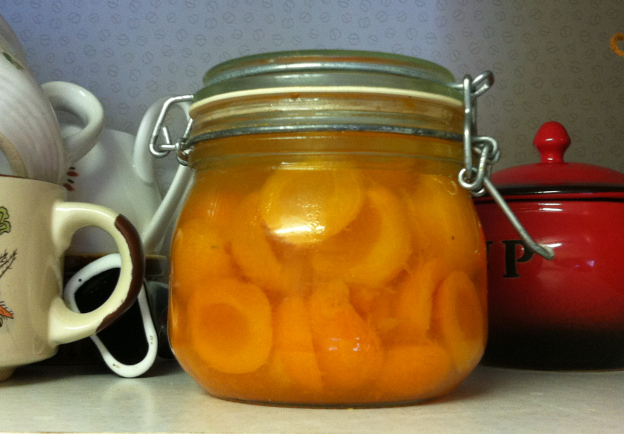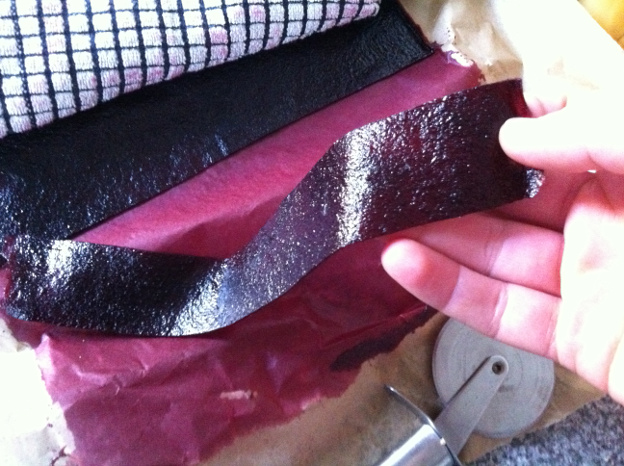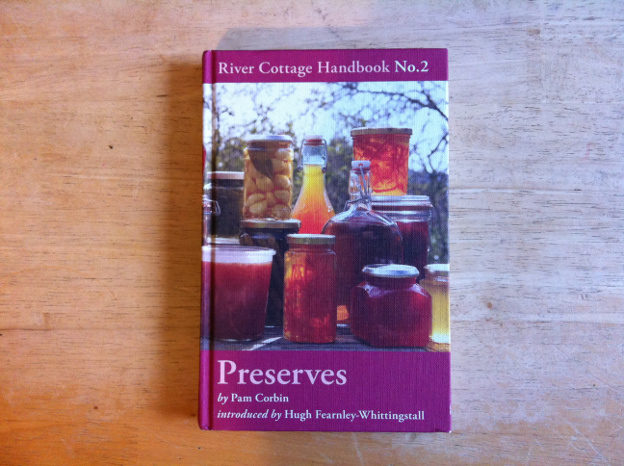Like all of the books in this series, Hugh Fearnley-Whittingstall writes the introduction to this book, but the actual subject matter itself is written by the relevant expert from the River Cottage TV series. In this case Pam ‘The Jam’ Corbin. Corbin and her husband founded and owned the jam manufacturers Thursday Cottage, and she is still heavily involved in the company. She has also appeared in several episodes of River Cottage, as well as running the preserve courses offered by River Cottage.
Having long been fans of the River Cottage TV series, a few years back Liz and I ordered all of the titles from the River Cottage Handbook series into our local library. We were very impressed by the quality of each of them. There were several titles that we were particularly interested in, and the library order was basically an opportunity to thumb through them to confirm their usefulness before we decided to purchase our own copies.
Before we borrowed it from the library, this particular title wasn’t one which we expected to buy. Not that we didn’t expect it to be good, just that we already had a couple of books on preserving, and many recipes which we had accumulated over the years. We’d tried our hands at many different jams and chutneys, and although we expected to find the odd recipe in this book that we would wish to try, we didn’t expect to find enough to justify purchasing another preserving book.
However, we were most surprised. This book isn’t a collection of jam and chutney recipes. There is such a variety of recipes in this book that we were astonished. So many things that we’d never considered making, from fruit cordial to harissa paste. So many delicious sounding recipes: honeyed hazels, roasted sweet beet relish, onion marmalade, countless recipes for flavoured vinegars and oils. Yes, this book does cover jams and chutneys, but there is so much more than that.

Our homemade bottled apricots – a recipe from this book.
On the subject of chutneys, there is an excellent seasonal chutney recipe in this book, the classic grower’s surplus chutney – full of courgettes and tomatoes. But Corbin goes on to offer several seasonal variations, and encourages the reader to come up with their own. As long as the fruit/veg to sugar and vinegar ratio stays the same, this basic recipe can be used for just about any fruit or veg. Some of our favourite sounding variations (although we are yet to try them) are rhubarb and fig (spring) and pumpkin and quince (early autumn).
This book is like a preserving encyclopedia! There is so much information in this book, both in general terms, such as the basic science of why food spoils and how we can prevent that with preservation, but also on specific techniques, such as bottling and pickling. Where the method or preserving ingredients vary by the product being preserved, Corbin has provided charts to allow for the correct recipe to be identified at a glance.

A batch of fruit leather we made following the recipe from the River Cottage Preserves Handbook.
We have tried many recipes from this book, and we are yet to be disappointed. Many of the recipes we have posted about on this blog, such as our first attempt at bottling fruit, the mulled pears in cider and the fruit leather. When we have a fruit or vegetable we wish to preserve, our first stop is now looking it up in the index of this book to see what Corbin suggests with doing with it. We often find the hardest part is deciding which to try first.
The main thing I like about this book is that I find it so inspiring. I often browse it like a catalogue of recipes to try. On pretty much every page I think ‘I’ll have to try that next year when we have a surplus of those’, or ‘I’ll add that ingredient to the shopping list and give that a try soon’. Even if you haven’t got the space to grow on the River Cottage scale, using inexpensive ingredients and standard kitchen equipment, offered on these pages is the opportunity to experience your own little piece of River Cottage.
In summary this book goes a long way beyond the classic homemade preserves such as jams and chutneys. There are detailed yet concise instructions on a variety of preserving methods and so many intriguing recipes in here that would make great gifts to friends, or even interesting talking points to serve at a dinner party, or of course just to store for one’s own use. I think the reviews on Amazon give an indication as to just how good this book is. At the time of writing this review there are nearly 250 reviews on Amazon.co.uk, averaging 4.7 stars.
Click this link to View Preserves (River Cottage Handbook No. 2) on Amazon.co.uk where preview images can be viewed, including a few of the recipes, one of which is the fruit leather recipe that we tried. At the time of writing the better sample images are accessed in the ‘see all 8 images’ link under the book cover, but clicking the book cover itself to ‘look inside’ allows the index to be viewed, which will give you an idea of vast array of recipes and techniques in this book.


